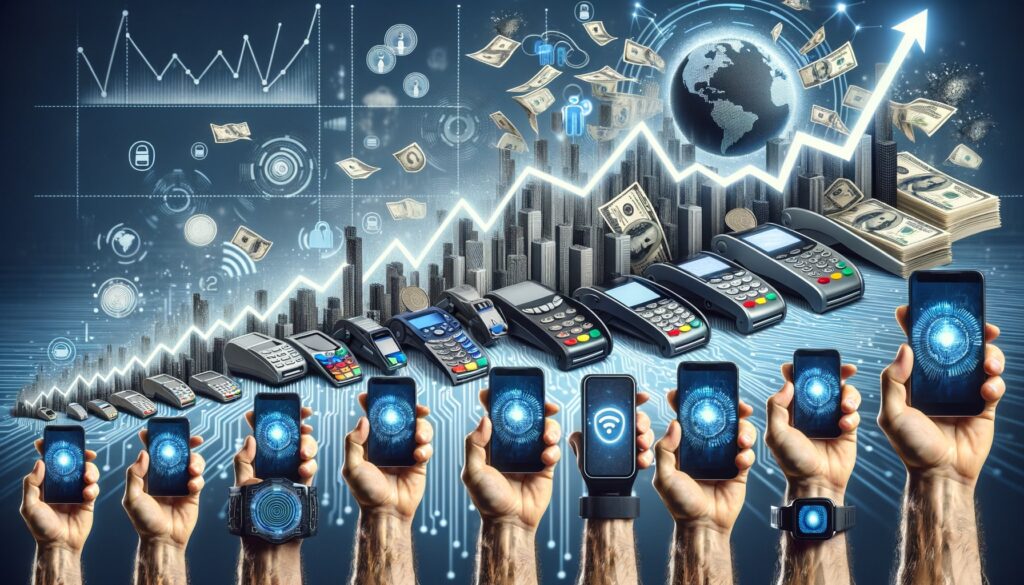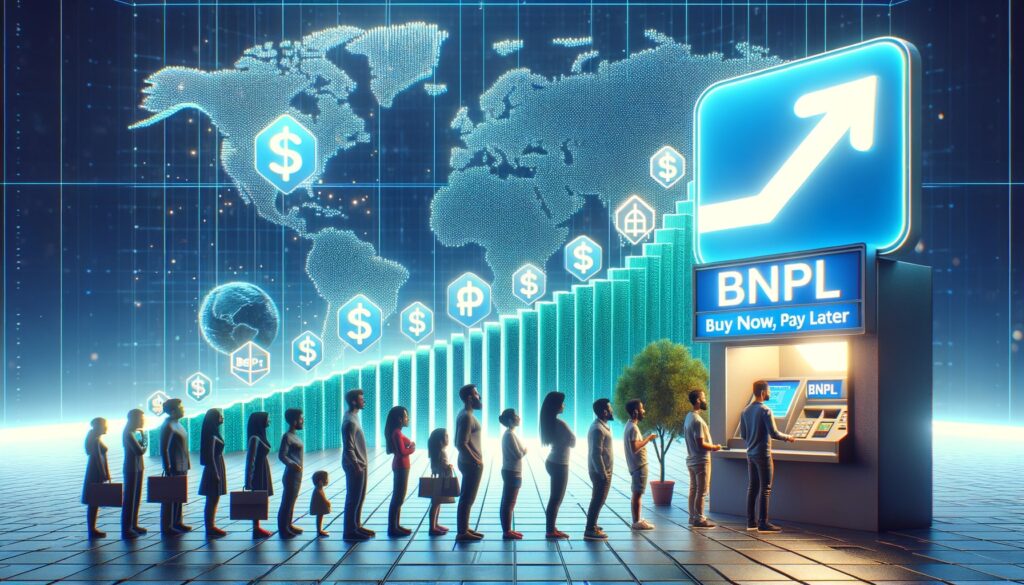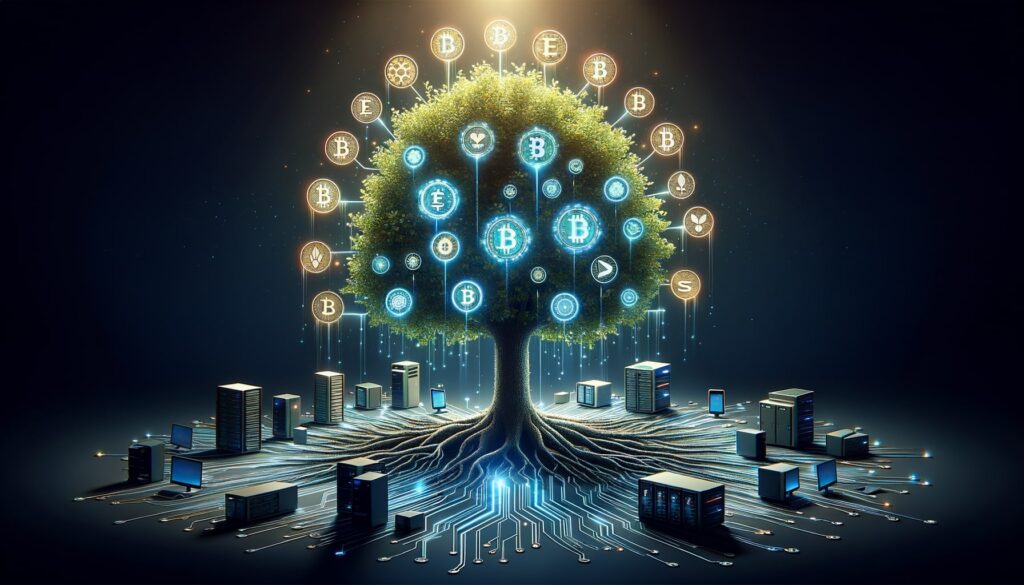Best Credit Card Processing Solutions Tailored for Every Industry

By admin October 15, 2024
The world of payment processing is advancing rapidly as technology continues to evolve and consumers demand more convenience, security, and flexibility. The year 2025 is expected to witness remarkable shifts and improvements in how businesses and consumers manage transactions. This article will explore the top trends that will shape payment processing in 2025, highlighting innovations, challenges, and opportunities for businesses.
The Growth of Contactless Payments

How Contactless Payments Have Gained Traction
Contactless payments have been growing steadily over the past few years, but in 2025, they are expected to dominate the payment landscape. Consumers are increasingly using contactless methods such as NFC (Near Field Communication) and mobile wallets like Apple Pay and Google Pay to make purchases without the need for physical contact. This trend has been accelerated by the COVID-19 pandemic, where health concerns highlighted the importance of touch-free transactions.
Benefits for Businesses and Consumers
Contactless payments offer many advantages, including faster transaction times, enhanced security through tokenization, and an improved customer experience. For businesses, contactless payments can help streamline checkout processes, reduce wait times, and increase transaction volume, particularly in industries like retail and hospitality.
The Future of Wearable Payment Devices
Wearable devices like smartwatches and fitness trackers equipped with payment functionality are also contributing to the rise of contactless payments. In 2025, wearable payment devices are expected to become even more popular as more consumers adopt these technologies for convenience.
The Rise of Cryptocurrencies in Mainstream Transactions

How Cryptocurrencies Are Shaping the Payment Industry
Cryptocurrencies such as Bitcoin, Ethereum, and stablecoins are increasingly being accepted by businesses as a legitimate form of payment. The decentralized nature of cryptocurrencies offers a transparent and secure way to conduct transactions without relying on traditional financial institutions. By 2025, more businesses, including small and medium-sized enterprises (SMEs), are expected to accept cryptocurrencies as payment options.
Stablecoins: The Bridge Between Traditional and Crypto Payments
Stablecoins, which are pegged to traditional currencies like the U.S. dollar, are expected to play a major role in mainstream crypto transactions. Their price stability makes them an appealing option for both consumers and businesses, addressing the volatility issues associated with other cryptocurrencies.
Challenges and Opportunities for Crypto Payments
Despite the growth of cryptocurrency payments, businesses still face challenges such as regulatory uncertainty, tax implications, and the need for specialized infrastructure. However, advancements in blockchain technology and partnerships between payment processors and crypto platforms are making it easier for businesses to integrate cryptocurrency payments.
The Expansion of Buy Now, Pay Later (BNPL) Solutions

How BNPL is Revolutionizing Consumer Financing
Buy Now, Pay Later (BNPL) services, which allow consumers to make purchases and pay for them over time, have become a dominant trend in the e-commerce and retail sectors. In 2025, BNPL is expected to expand beyond consumer goods and into sectors like healthcare, education, and even travel.
Benefits for Consumers and Retailers
BNPL offers consumers flexibility and convenience, allowing them to make purchases without needing upfront capital. Retailers benefit from increased sales, larger average order values, and improved customer loyalty. BNPL services typically come with minimal or zero interest fees if the payment plan is followed, making them an attractive alternative to traditional credit cards.
Regulatory Oversight and Consumer Protection
As BNPL gains popularity, regulatory oversight will likely increase to ensure consumer protection and transparency. In 2025, expect more governments and financial institutions to establish guidelines and rules for BNPL services to avoid predatory lending practices and ensure fair treatment for consumers.
The Growth of Real-Time Payments (RTP)

The Demand for Instant Payment Solutions
Real-time payments (RTP) are transforming how money moves between individuals and businesses, offering instant transfers and improved liquidity management. In 2025, RTP systems are expected to become more widespread, with global adoption by businesses across various sectors.
Benefits of RTP for Businesses and Consumers
For consumers, RTP offers faster access to funds, which is particularly useful for payroll, refunds, and bill payments. Businesses benefit from improved cash flow management, as RTP eliminates the delay associated with traditional payment methods like ACH or wire transfers. In addition, the ability to provide instant refunds can enhance customer satisfaction and loyalty.
The Integration of RTP with Digital Wallets
As real-time payments gain momentum, their integration with digital wallets will further streamline the payment process. Consumers will be able to send and receive payments instantly through their preferred digital wallet platforms, increasing convenience and reducing friction in transactions.
Artificial Intelligence and Machine Learning in Fraud Prevention

The Role of AI in Detecting and Preventing Fraud
As the volume of digital transactions grows, so does the risk of fraud. In 2025, artificial intelligence (AI) and machine learning (ML) will play a critical role in detecting and preventing payment fraud. These technologies can analyze vast amounts of transaction data in real-time, identifying patterns and anomalies that indicate potential fraud.
Enhanced Security Measures for Businesses
By leveraging AI and ML, businesses can implement proactive fraud detection systems that can reduce chargebacks, minimize losses, and protect customer data. In addition, these technologies will allow businesses to stay ahead of increasingly sophisticated cyberattacks.
Balancing Security with User Experience
While advanced fraud detection is crucial, businesses must also balance security measures with user experience. Consumers expect smooth and frictionless transactions, so implementing robust security solutions without introducing too much friction is key. In 2025, businesses will need to invest in security solutions that are both effective and seamless for users.
The Adoption of Biometric Authentication

The Shift Toward Biometric Security Solutions
Biometric authentication methods, such as fingerprint scanning, facial recognition, and voice verification, are becoming the norm in payment security. In 2025, biometric authentication is expected to replace traditional passwords and PINs for securing online and in-person transactions.
How Biometrics Improve Security and Convenience
Biometric authentication provides a higher level of security compared to traditional methods, as biometric data is unique to each individual and difficult to replicate. In addition to enhancing security, biometrics offer a more convenient user experience by eliminating the need for users to remember passwords or carry physical tokens.
The Role of Multimodal Biometrics
Multimodal biometrics, which combine multiple biometric methods (such as fingerprint and facial recognition), are expected to grow in popularity in 2025. This approach further strengthens security by requiring more than one form of biometric verification, making it harder for fraudsters to bypass security systems.
The Rise of Embedded Payments
What Are Embedded Payments?
Embedded payments refer to the integration of payment capabilities directly into apps, platforms, and services, enabling users to make transactions without leaving the ecosystem. By 2025, embedded payments are expected to be a major trend in industries such as e-commerce, fintech, and on-demand services.
How Embedded Payments Enhance the Customer Experience
Embedded payments provide a seamless experience for users by allowing them to complete transactions without being redirected to external payment gateways. This integration enhances the user experience, reduces transaction time, and increases the likelihood of purchase completion.
Industries Benefiting from Embedded Payments
Industries such as ride-sharing, food delivery, subscription services, and marketplaces are already adopting embedded payments, and this trend is expected to expand to other sectors like healthcare, education, and finance in 2025.
The Role of Central Bank Digital Currencies (CBDCs)
The Emergence of CBDCs in the Global Payment Ecosystem
Central bank digital currencies (CBDCs) are digital versions of fiat currencies issued by central banks. Several countries are currently exploring the development and implementation of CBDCs, and by 2025, these digital currencies may play a significant role in the global payment ecosystem.
Benefits of CBDCs for Governments and Consumers
CBDCs offer several advantages, including improved monetary policy implementation, reduced reliance on cash, and enhanced financial inclusion. For consumers, CBDCs provide a secure and government-backed digital currency option that can be used for everyday transactions.
Challenges and Considerations for CBDC Implementation
While CBDCs have the potential to revolutionize payment systems, there are challenges to consider, including privacy concerns, cybersecurity risks, and the need for robust regulatory frameworks. In 2025, central banks will need to address these issues to ensure the successful rollout and adoption of CBDCs.
The Impact of Open Banking on Payment Processing
How Open Banking Is Changing the Financial Landscape
Open banking, which allows third-party providers to access banking data with customer consent, is expected to have a transformative impact on payment processing in 2025. By enabling greater data sharing, open banking allows for more personalized and efficient payment solutions.
The Role of APIs in Facilitating Open Banking
Application Programming Interfaces (APIs) are at the core of open banking, allowing fintech companies and payment service providers to access financial data and create innovative payment solutions. By 2025, APIs will continue to facilitate seamless connections between banks, fintech platforms, and merchants, improving payment efficiency and customer experiences.
Consumer Benefits and Data Security Concerns
While open banking offers benefits such as better financial management and more personalized services, it also raises concerns about data security and privacy. In 2025, businesses will need to implement strong security measures to protect consumer data while leveraging the advantages of open banking.
FAQs
What is a Real-Time Payment System?
A real-time payment system allows instant transfer of funds between bank accounts, enabling consumers and businesses to send and receive payments in real time. This system offers faster processing times compared to traditional methods like ACH or wire transfers.
Are Cryptocurrencies Safe for Everyday Transactions?
While cryptocurrencies offer transparency and security through blockchain technology, they are not without risks, including price volatility and regulatory uncertainty. Stablecoins provide a more stable alternative, making them better suited for everyday transactions.
How Does Biometric Authentication Work?
Biometric authentication uses unique physical or behavioral characteristics, such as fingerprints, facial recognition, or voice patterns, to verify a user’s identity. This method offers higher security compared to traditional passwords or PINs.
What Are Central Bank Digital Currencies (CBDCs)?
CBDCs are digital currencies issued by central banks that represent a digital form of a country’s fiat currency. They are designed to provide a secure and government-backed digital payment option for consumers and businesses.
How Can Businesses Benefit from Embedded Payments?
Embedded payments allow businesses to integrate payment functionality directly into their platforms, providing a seamless transaction experience for users. This leads to faster checkouts, improved user satisfaction, and increased transaction completion rates.
Conclusion
As we look ahead to 2025, the payment processing landscape is set to undergo significant changes driven by technology, consumer demand, and regulatory developments. The trends discussed in this article—ranging from the rise of contactless payments and cryptocurrencies to the growing importance of biometric authentication and open banking—highlight the direction in which the industry is headed.
Businesses that stay ahead of these trends will be well-positioned to meet the evolving needs of their customers, enhance security, and streamline their payment processes. Whether you’re a merchant, a fintech company, or a consumer, understanding these trends is key to navigating the future of payments.
